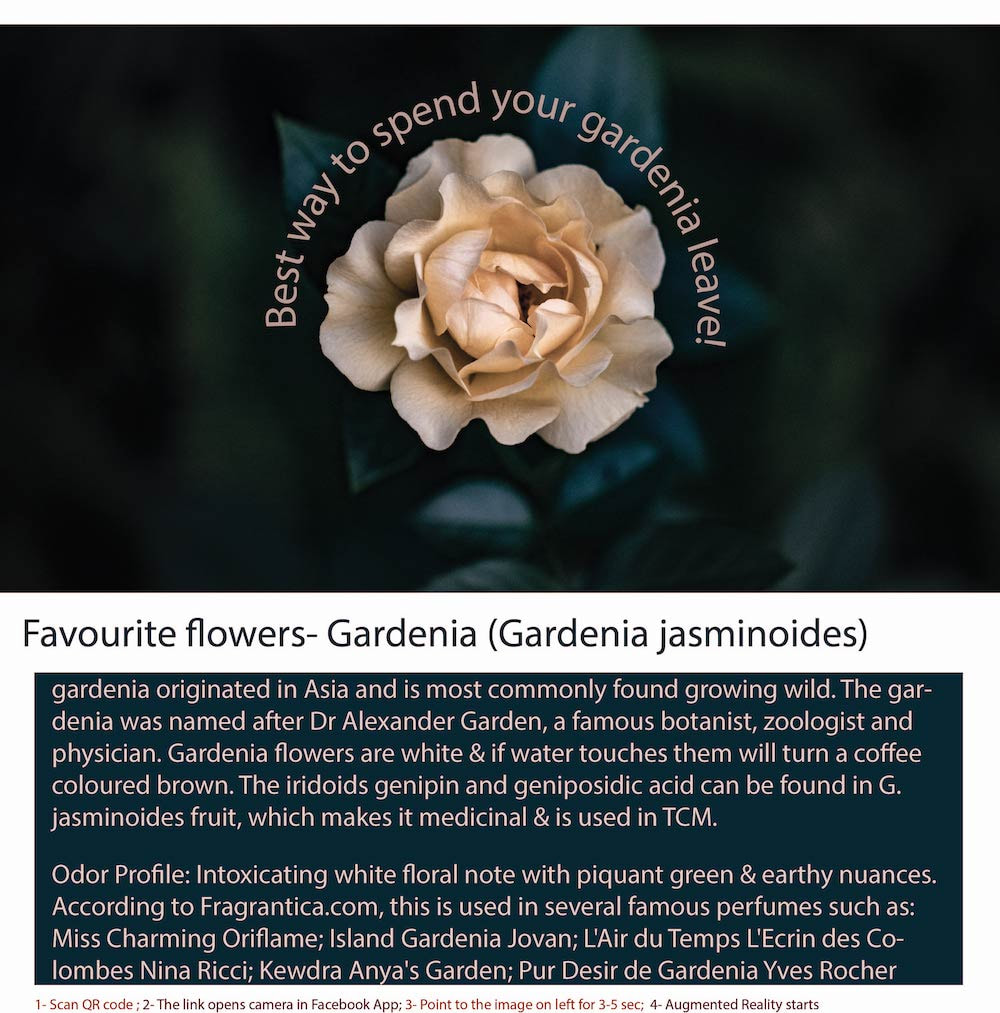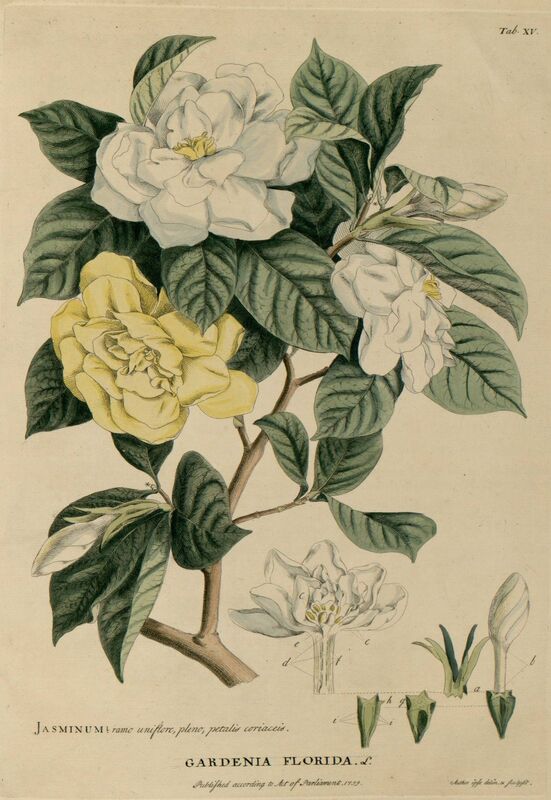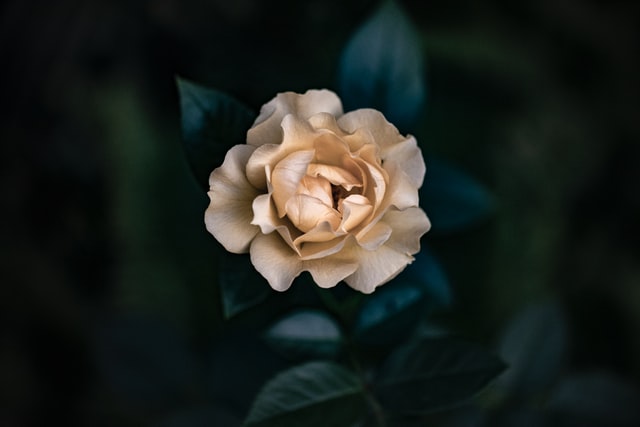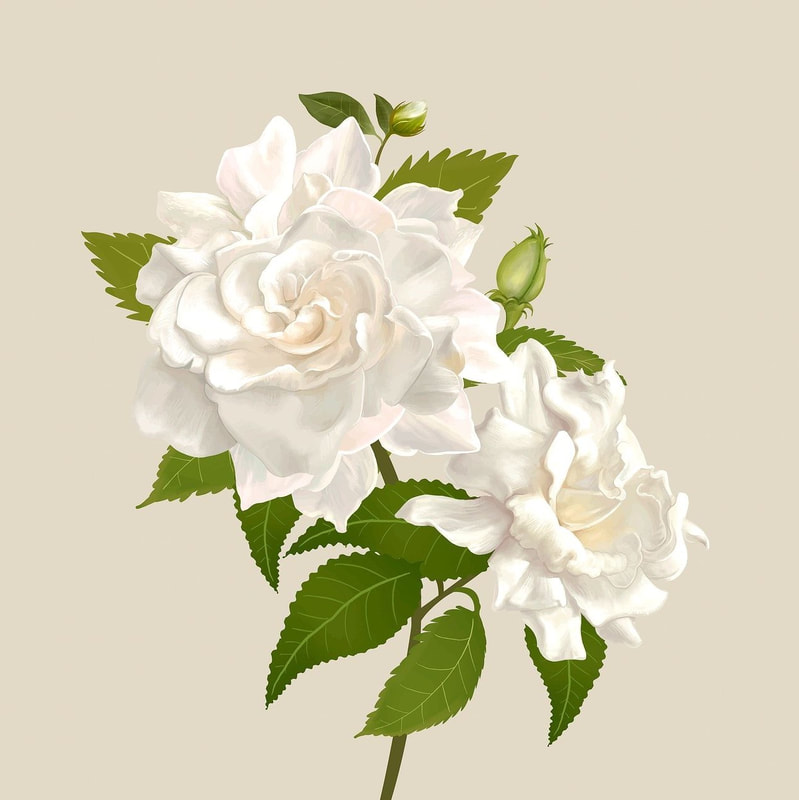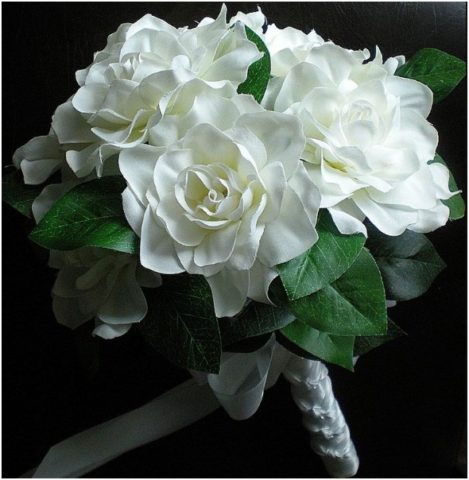Scentopia's Gardenia Collection: A Floral Haven
Gardenia: A Fragrant Symphony of Beauty and Grace
In the world of flowers, few can rival the allure and elegance of the gardenia. With its exquisite beauty and intoxicating fragrance, the gardenia has captured the hearts of many and found its way into perfumes, therapeutic oils, culinary delights, and even traditional medicine. Join us as we embark on a journey through the enchanting world of gardenias, exploring their rich history, diverse uses, and fun and crazy facts.
1. A Glimpse into History: The gardenia, scientifically known as Gardenia jasminoides, is native to Asia, particularly China and Japan. These mesmerizing blooms have a long and storied history, dating back centuries.
The gardenia holds deep cultural significance in various Asian countries, symbolizing purity, love, and refinement. It is often used in traditional ceremonies, weddings, and as a token of appreciation.
2. Perfumes and Fragrance: Gardenias are renowned for their intoxicating fragrance, which has made them a prized ingredient in the world of perfumery. The rich and heady scent of gardenias exudes a sense of romance, femininity, and luxury, making it a popular choice for high-end perfumes and fine fragrances.
Gardenia-scented perfumes are celebrated for their captivating and long-lasting aroma, often used as both a heart note and a base note in perfumery compositions. The sweet and floral scent of gardenias blends harmoniously with other floral and woody notes, creating enchanting olfactory experiences.
3. Therapeutic Oils and Aromatherapy: In aromatherapy, gardenia essential oil is treasured for its therapeutic properties. The oil is extracted from the fragrant blossoms through a delicate process of steam distillation, capturing the essence of their soothing and calming qualities.
When used in diffusers or massage oils, gardenia essential oil can create a relaxing and tranquil ambiance, promoting feelings of serenity and peace. It is believed to reduce stress, anxiety, and promote emotional balance.
4. Culinary Delights: Gardenias have also found their way into the culinary world, although in a limited capacity. The petals of certain gardenia species are edible and can be used as decorative elements in salads, desserts, and beverages. Their delicate and slightly sweet flavor adds a unique touch to culinary creations.
It's essential to note that not all gardenia species are edible, and caution should be exercised when using gardenia petals for culinary purposes.
5. Medicinal Uses and Traditional Remedies: In traditional medicine, gardenias have been used for their potential health benefits. Gardenia extracts are believed to possess anti-inflammatory and analgesic properties, making them useful for relieving pain and inflammation in certain traditional medicinal systems.
Gardenia extracts have also been used to treat various skin conditions, such as acne and skin irritation, due to their astringent and anti-inflammatory effects.
6. Fun and Crazy Facts: The gardenia has some intriguing and fun facts associated with it. Did you know that gardenias are not only admired for their beauty and fragrance but are also a favorite of artists and painters? Their delicate and pure white petals make them a popular subject for still-life paintings and floral arrangements.
Additionally, gardenias have been featured in literature and films as symbols of love, beauty, and mystery, adding to their allure as a timeless flower.
7. Varieties and Cultivation: There are over 140 species of gardenias, each boasting its unique charm and fragrance. Some popular varieties include the Cape Jasmine (Gardenia jasminoides), which is widely used in perfumery, and the Golden Gardenia (Gardenia thunbergia), known for its bright yellow flowers.
Cultivating gardenias requires some care and attention, as they thrive in well-draining, acidic soil and prefer warm, humid climates. With proper care, gardenias can grace gardens and landscapes with their beauty and fragrance.
Gardenias are a symbol of beauty, grace, and refinement, cherished for their captivating fragrance and enchanting allure. From perfumes and aromatherapy to culinary applications and traditional medicine, gardenias have woven their magic into various aspects of human life.
As we continue to appreciate the delicate beauty and intoxicating fragrance of gardenias, let us also honor the rich history and cultural significance that these lovely blooms carry. The gardenia's ability to evoke feelings of romance, purity, and elegance makes it an eternal favorite, captivating hearts and senses across generations.
In the world of flowers, few can rival the allure and elegance of the gardenia. With its exquisite beauty and intoxicating fragrance, the gardenia has captured the hearts of many and found its way into perfumes, therapeutic oils, culinary delights, and even traditional medicine. Join us as we embark on a journey through the enchanting world of gardenias, exploring their rich history, diverse uses, and fun and crazy facts.
1. A Glimpse into History: The gardenia, scientifically known as Gardenia jasminoides, is native to Asia, particularly China and Japan. These mesmerizing blooms have a long and storied history, dating back centuries.
The gardenia holds deep cultural significance in various Asian countries, symbolizing purity, love, and refinement. It is often used in traditional ceremonies, weddings, and as a token of appreciation.
2. Perfumes and Fragrance: Gardenias are renowned for their intoxicating fragrance, which has made them a prized ingredient in the world of perfumery. The rich and heady scent of gardenias exudes a sense of romance, femininity, and luxury, making it a popular choice for high-end perfumes and fine fragrances.
Gardenia-scented perfumes are celebrated for their captivating and long-lasting aroma, often used as both a heart note and a base note in perfumery compositions. The sweet and floral scent of gardenias blends harmoniously with other floral and woody notes, creating enchanting olfactory experiences.
3. Therapeutic Oils and Aromatherapy: In aromatherapy, gardenia essential oil is treasured for its therapeutic properties. The oil is extracted from the fragrant blossoms through a delicate process of steam distillation, capturing the essence of their soothing and calming qualities.
When used in diffusers or massage oils, gardenia essential oil can create a relaxing and tranquil ambiance, promoting feelings of serenity and peace. It is believed to reduce stress, anxiety, and promote emotional balance.
4. Culinary Delights: Gardenias have also found their way into the culinary world, although in a limited capacity. The petals of certain gardenia species are edible and can be used as decorative elements in salads, desserts, and beverages. Their delicate and slightly sweet flavor adds a unique touch to culinary creations.
It's essential to note that not all gardenia species are edible, and caution should be exercised when using gardenia petals for culinary purposes.
5. Medicinal Uses and Traditional Remedies: In traditional medicine, gardenias have been used for their potential health benefits. Gardenia extracts are believed to possess anti-inflammatory and analgesic properties, making them useful for relieving pain and inflammation in certain traditional medicinal systems.
Gardenia extracts have also been used to treat various skin conditions, such as acne and skin irritation, due to their astringent and anti-inflammatory effects.
6. Fun and Crazy Facts: The gardenia has some intriguing and fun facts associated with it. Did you know that gardenias are not only admired for their beauty and fragrance but are also a favorite of artists and painters? Their delicate and pure white petals make them a popular subject for still-life paintings and floral arrangements.
Additionally, gardenias have been featured in literature and films as symbols of love, beauty, and mystery, adding to their allure as a timeless flower.
7. Varieties and Cultivation: There are over 140 species of gardenias, each boasting its unique charm and fragrance. Some popular varieties include the Cape Jasmine (Gardenia jasminoides), which is widely used in perfumery, and the Golden Gardenia (Gardenia thunbergia), known for its bright yellow flowers.
Cultivating gardenias requires some care and attention, as they thrive in well-draining, acidic soil and prefer warm, humid climates. With proper care, gardenias can grace gardens and landscapes with their beauty and fragrance.
Gardenias are a symbol of beauty, grace, and refinement, cherished for their captivating fragrance and enchanting allure. From perfumes and aromatherapy to culinary applications and traditional medicine, gardenias have woven their magic into various aspects of human life.
As we continue to appreciate the delicate beauty and intoxicating fragrance of gardenias, let us also honor the rich history and cultural significance that these lovely blooms carry. The gardenia's ability to evoke feelings of romance, purity, and elegance makes it an eternal favorite, captivating hearts and senses across generations.
To experience augmented reality, please open the Facebook-app using QR code and point to the image below
Elevate Your Senses with White Gardenia Fragrances
Believe it or not, gardenia is from Coffee family. Gardenias are evergreen shrubs and small trees growing to 1–15 metres. The flowers are solitary or in small clusters, white, or pale yellow, with a tubular-based corolla.
Gardenia, (genus Gardenia), genus of more than 140 species of shrubs and trees in the madder family (Rubiaceae), native to tropical and subtropical Africa, Asia, and Pacific islands.
Gardenia is a tropical flowering plant that is native to Asia and belongs to the family Rubiaceae. It is known for its large, fragrant flowers that are typically white, but can also be found in shades of yellow or pink. Gardenia plants are popular in gardens and as indoor plants due to their beautiful flowers and pleasant fragrance.
In traditional medicine, the roots, leaves, and flowers of the gardenia plant have been used to treat a variety of ailments such as fever, skin infections, and sore throat. Gardenia is also used in traditional Chinese medicine to promote digestion, reduce inflammation, and relieve pain.
Gardenia has a strong, sweet, and intoxicating aroma that is often used in perfumes, soaps, and other fragranced products. The aroma of gardenia is created by the compound called Gardenoside.
Gardenia is also used in the fragrance industry as a top note, it's a very popular note in perfumes and colognes, most notably in the famous brand such as:
Gardenia, (genus Gardenia), genus of more than 140 species of shrubs and trees in the madder family (Rubiaceae), native to tropical and subtropical Africa, Asia, and Pacific islands.
Gardenia is a tropical flowering plant that is native to Asia and belongs to the family Rubiaceae. It is known for its large, fragrant flowers that are typically white, but can also be found in shades of yellow or pink. Gardenia plants are popular in gardens and as indoor plants due to their beautiful flowers and pleasant fragrance.
In traditional medicine, the roots, leaves, and flowers of the gardenia plant have been used to treat a variety of ailments such as fever, skin infections, and sore throat. Gardenia is also used in traditional Chinese medicine to promote digestion, reduce inflammation, and relieve pain.
Gardenia has a strong, sweet, and intoxicating aroma that is often used in perfumes, soaps, and other fragranced products. The aroma of gardenia is created by the compound called Gardenoside.
Gardenia is also used in the fragrance industry as a top note, it's a very popular note in perfumes and colognes, most notably in the famous brand such as:
- Chanel No. 5
- Dior J'adore
- Yves Saint Laurent Black Opium
- Gucci Bloom
- Tom Ford Jasmin Rouge
- Estée Lauder Beautiful
- Jo Malone Peony & Blush Suede
- Burberry My Burberry
- Yves Saint Laurent Black Opium
- Narciso Rodriguez For Her.
Captivating Aromas of Gardenia in Every Product
Cape jasmine (Gardenia jasminoides), native to China, is the fragrant species sold by florists and grown as an ornamental. Gardenia is a breathtaking flower and often used in floral arrangements. In various cultural references, it symbolizes honor and stands for feminine beauty. It is believed that the biblical figure, Solomon, offered a gardenia flower each morning to each of the women in his harem. This was done in order to ease tensions and jealousies amongst them.
Gardenia is a popular plant in Singapore, and is often used in gardens and as indoor plants due to its beautiful flowers and pleasant fragrance. It has been cultivated in Singapore for many years, with a history dating back to the 19th century, when it was first introduced as an ornamental plant.
In Singapore, gardenia plants are commonly grown in home gardens, public parks, and botanical gardens. The most popular cultivars of gardenia in Singapore are G. jasminoides 'Fortuniana', G. jasminoides 'Radicans' and G. jasminoides 'Veitchii'. The cultivar 'Fortuniana' is known for its large, white, and fragrant flowers, while 'Radicans' is a dwarf cultivar that is popular for its compact size and ease of care. 'Veitchii' is also known for its large flowers, and its bright yellow color.
Gardenia plants in Singapore require specific growing conditions to thrive, such as warm and humid environment, well-draining soil with a neutral pH and regular fertilizing, consistent moisture, and protection from direct sunlight. Gardenia is sensitive to cold temperatures, so it is generally grown as a houseplant or in a greenhouse.
Overall, Gardenia is a much loved and enjoyed flower in Singapore, for both its beauty and its aroma, it's also a well-known plant in Southeast Asia, where it is widely cultivated for its ornamental and medicinal properties.
Gardenia is a popular plant in Singapore, and is often used in gardens and as indoor plants due to its beautiful flowers and pleasant fragrance. It has been cultivated in Singapore for many years, with a history dating back to the 19th century, when it was first introduced as an ornamental plant.
In Singapore, gardenia plants are commonly grown in home gardens, public parks, and botanical gardens. The most popular cultivars of gardenia in Singapore are G. jasminoides 'Fortuniana', G. jasminoides 'Radicans' and G. jasminoides 'Veitchii'. The cultivar 'Fortuniana' is known for its large, white, and fragrant flowers, while 'Radicans' is a dwarf cultivar that is popular for its compact size and ease of care. 'Veitchii' is also known for its large flowers, and its bright yellow color.
Gardenia plants in Singapore require specific growing conditions to thrive, such as warm and humid environment, well-draining soil with a neutral pH and regular fertilizing, consistent moisture, and protection from direct sunlight. Gardenia is sensitive to cold temperatures, so it is generally grown as a houseplant or in a greenhouse.
Overall, Gardenia is a much loved and enjoyed flower in Singapore, for both its beauty and its aroma, it's also a well-known plant in Southeast Asia, where it is widely cultivated for its ornamental and medicinal properties.
Experience Luxury Spa with Gardenia Infusions
Gardenia has been used in traditional medicine for a variety of ailments, including fever, skin infections, and sore throat. The roots, leaves, and flowers of the gardenia plant contain compounds that have medicinal properties.
In traditional Chinese medicine (TCM), gardenia is used to promote digestion, reduce inflammation, and relieve pain. The root of the plant is used to treat fever and dysentery, while the flowers are used to treat sore throat and other respiratory issues. The leaves are also used to treat skin infections and other skin conditions.
Gardenia has anti-inflammatory and antioxidant properties that can help to reduce inflammation and protect cells from damage caused by free radicals. It has been used to treat conditions such as rheumatoid arthritis, osteoarthritis, and gout.
Gardenia also has antimicrobial properties that can help to fight off infections caused by bacteria and fungi. The compounds found in gardenia, such as geniposide, have been shown to have antimicrobial activity against a variety of microorganisms.
Gardenia is also used in cosmetics, the oil of Gardenia is used for its fragrance, moisturizing, and skin-lightening properties.
Gardenia Fun Fcats:
In traditional Chinese medicine (TCM), gardenia is used to promote digestion, reduce inflammation, and relieve pain. The root of the plant is used to treat fever and dysentery, while the flowers are used to treat sore throat and other respiratory issues. The leaves are also used to treat skin infections and other skin conditions.
Gardenia has anti-inflammatory and antioxidant properties that can help to reduce inflammation and protect cells from damage caused by free radicals. It has been used to treat conditions such as rheumatoid arthritis, osteoarthritis, and gout.
Gardenia also has antimicrobial properties that can help to fight off infections caused by bacteria and fungi. The compounds found in gardenia, such as geniposide, have been shown to have antimicrobial activity against a variety of microorganisms.
Gardenia is also used in cosmetics, the oil of Gardenia is used for its fragrance, moisturizing, and skin-lightening properties.
Gardenia Fun Fcats:
- In France, gardenias were traditionally worn by men as boutonnière when in evening dress. In The Age of Innocence, Edith Wharton states that it was customary for upper-class men from New York City to wear a gardenia in their buttonhole during the Gilded Age.
- Gardenia was supposedly Sigmund Freud's favorite flower.
- Gardenia is also known as "Cape Jasmine" because it is native to South Africa and has a similar fragrance to true jasmine.
- The genus name, Gardenia, honors Dr. Alexander Garden, a Scottish-born American naturalist who lived in the 18th century.
- Gardenia flowers are often used in making lei, a traditional Hawaiian necklace.
- Gardenia is the state flower of Louisiana and Mississippi in the United States.
- The flowers of the Gardenia are used to make perfumes and scented oils.
- Gardenia plants are sensitive to cold temperatures and prefer a warm, humid environment.
- Gardenia is known for its intense, sweet fragrance and its large, showy white flowers.
- Gardenia is a symbol of love and purity in Chinese culture, and is often given as a gift to express these emotions.
- Gardenia plants can be propagated from cuttings or by layering.
- Some species of Gardenia are used in traditional Chinese medicine to treat a variety of ailments, such as fever and sore throat.
The Beauty and Serenity of Elegant Gardenia
Many of the gardenias possess a diverse array of natural products, used in various ways by humans. Its gums and resins either attract or repel invertebrate herbivores, which is being studied by ecologists.
The aroma of Gardenia is sweet, floral, and heavily fragrant. It has a classic white floral scent with notes of jasmine, rose and lily of the valley. The aroma is rich, creamy and has a hint of tropical fruit and honey. The aroma is intense and long-lasting, making it a popular choice in perfumes, scented candles, and other fragrance products.
The main chemical components of Gardenia aroma are benzyl acetate, linalool, methyl anthranilate, and methyl benzoate. These are responsible for the sweet and floral notes in the scent. Some other chemical components found in Gardenia aroma are benzoic acid, benzyl alcohol, methyl salicylate, and stearoptene.
It should be noted that the aroma of gardenia may vary depending on the species, growing conditions, and the time of year when the flower is harvested.
The main chemical components of Gardenia aroma are:
The aroma of Gardenia is sweet, floral, and heavily fragrant. It has a classic white floral scent with notes of jasmine, rose and lily of the valley. The aroma is rich, creamy and has a hint of tropical fruit and honey. The aroma is intense and long-lasting, making it a popular choice in perfumes, scented candles, and other fragrance products.
The main chemical components of Gardenia aroma are benzyl acetate, linalool, methyl anthranilate, and methyl benzoate. These are responsible for the sweet and floral notes in the scent. Some other chemical components found in Gardenia aroma are benzoic acid, benzyl alcohol, methyl salicylate, and stearoptene.
It should be noted that the aroma of gardenia may vary depending on the species, growing conditions, and the time of year when the flower is harvested.
The main chemical components of Gardenia aroma are:
- Benzyl acetate - responsible for the sweet, floral and fruity notes in the scent.
- Linalool - gives the aroma a sweet, floral, and slightly woody note.
- Methyl anthranilate - it contributes to the floral and fruity notes and a slight spicy or pungent nuance.
- Methyl benzoate - provides a sweet, floral, and fruity note, with a slight balsamic undertone.
- Benzoic acid - adds a slight, sweet and floral note.
- Benzyl alcohol - gives a sweet, floral, and slightly spicy note.
- Methyl salicylate - adds a sweet, floral, and slightly spicy note.
- Stearoptene - adds a slightly woody and spicy aroma
- Geraniol - gives a floral, rose-like aroma
- Farnesol - gives a fresh, floral, and slightly spicy aroma
Shop the Finest White Flower Gardenia Products
Gardenia is a popular note in many perfumes and fragrance products. Some famous perfumes that feature gardenia as a key note include:
- Dior J'adore - Gardenia is used to add a sweet, floral, and creamy note to this popular perfume.
- Gucci Bloom - This perfume features Gardenia as the main note, giving it a sweet, floral, and intense aroma.
- Marc Jacobs Daisy - Gardenia is used to add a sweet, floral, and slightly fruity note to this popular perfume.
- Yves Saint Laurent Black Opium - Gardenia is used to add a sweet, floral, and slightly spicy note to this popular perfume.
- Tom Ford's White Patchouli - Gardenia is used to add a sweet, floral, and slightly spicy note to this popular perfume
- Jo Malone's Peony & Blush Suede - Gardenia is used to add a sweet, floral, and slightly spicy note to this popular perfume
- Jo Malone's White Jasmine & Mint - Gardenia is used to add a sweet, floral, and slightly spicy note to this popular perfume
- Jo Malone's Peony & Blush Suede
- Jo Malone's White Jasmine & Mint
- Estée Lauder's Beautiful
- Gucci's Flora Gorgeous Gardenia
- Dior's Miss Dior Cherie
- Tom Ford's Private Blend
- Yves Saint Laurent's Opium
- Givenchy's Amarige
- Lancome's Tresor
- Burberry's My Burberry
- Ralph Lauren's Ralph
- Calvin Klein's Obsession
- Versace's Crystal Noir
- Gucci's Rush
Join Scentopia, Sentosa's latest tourist attraction wonderful orchid scent crafting, fragrance tour, bridal shower or corporate team building which includes perfume making onsite and offsite, beach activities and more. We also serve primary school learning journey, secondary students and pupil on industrial excursions. Know more about our orchids perfume bar or therapeutic orchid scents and other wellness aromas. Conatct Perfume workshop or book a scent crafting session here.

